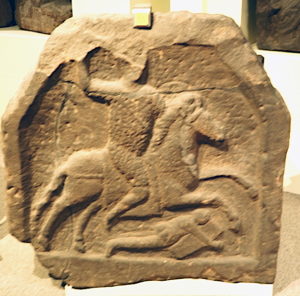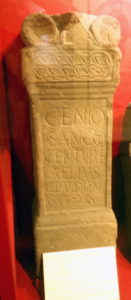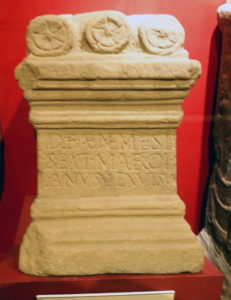This gallery has an impressive collection of altars and tombstones and also covers funerary rites in Roman times. Tombstones were erected outside the city, either in a cemetery or along major roads.
Funerals were important occasions to remember and honour the dead. The body being washed and laid out on a couch in their best clothes for eight days before the burial. The burial procession usually took place at night and was led by the dominus funeri followed by musicians and mourning women. A coin was often placed in the mouth of the dead to pay Charon the boatmen across the River Styx to the land of the dead.
If the body was to be cremated, it was put on a funeral pyre. The ashes were gathered and placed in funerary urns.
Later, burial became more common, possibly in response to Christianity. Burials were always outside the city, either in large cemeteries or along the major roads. Many small lachrymatory vessels have been found. These may have contained scented oils and unguents used to anoint the body and placed in the grave afterwards.
Many of the stones were discovered during repair work to the walls in the late C19th and had been recycled as building stone when the walls were being repaired.
Tombstones would originally have been brightly painted. They included a carving of the person commemorated as well as a brief inscription. They offer a wonderful insight into the life of the dead. Many of the tombstones depict banqueting scenes with the deceased reclining on a couch and holding a small cup. They are intended to represent the loved one still enjoying the good things of life….
ALTARS
Romans worshipped many gods and Romans often had their own personal god and a small shrine in their villa. Larger altars were designed to display the wealth and piety of the person who had them made. Many of the altars were either a plea to grant a wish, thanksgiving for the wish being granted.
There is a small selection of altars in the gallery which were carved with a dedication to the god and either the request or thanks for its granting.
There are more photographs “here.”:https://www.sloweurope.com/community/threads/the-grosvenor-museum-and-roman-chester.6060/










